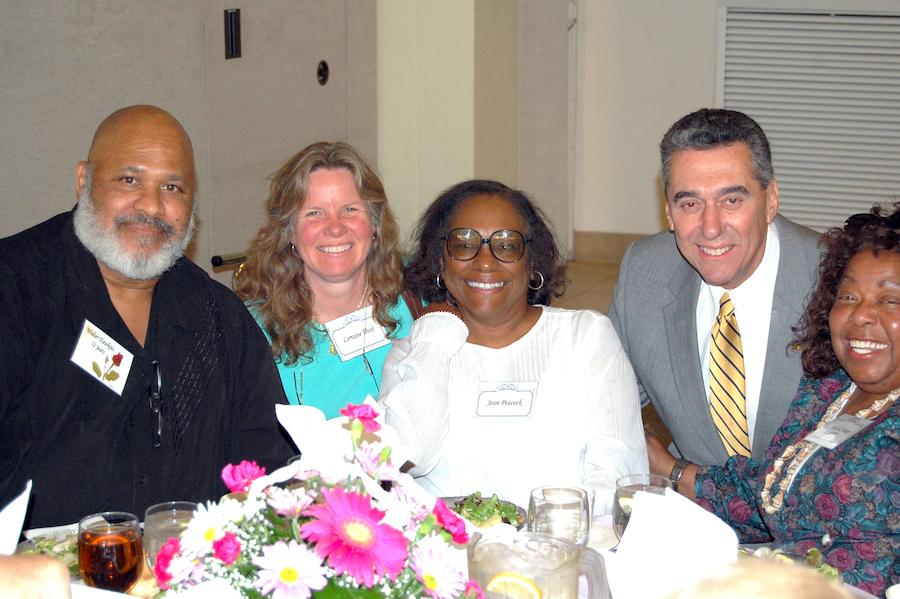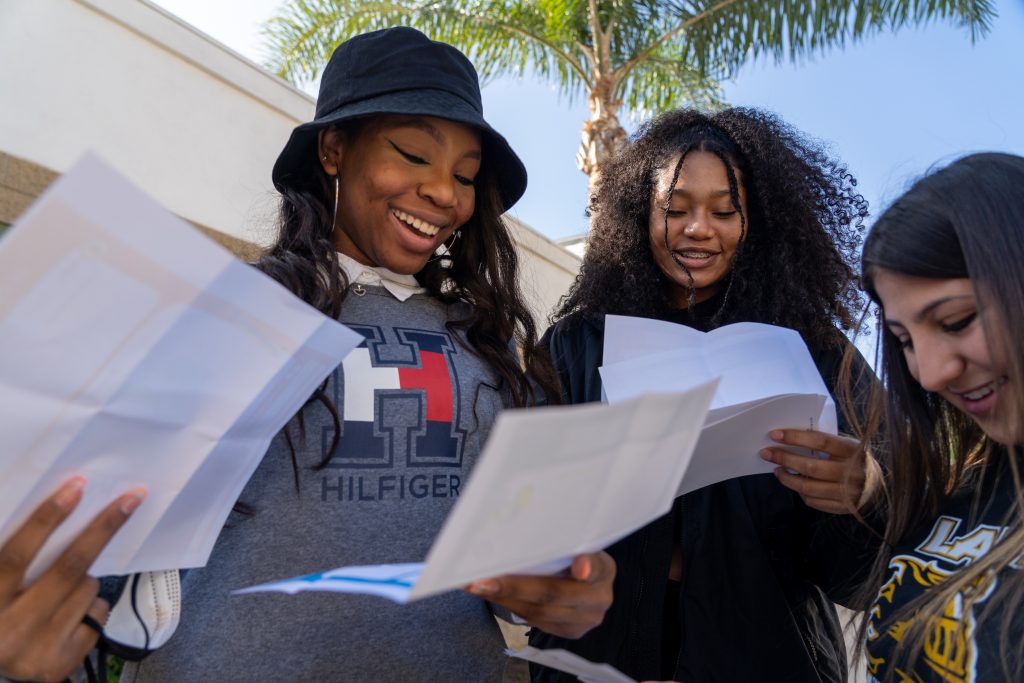From the staff of CSUSB
We were deeply saddened by the recent news of Walter S. Hawkins. For those that had the opportunity to know him, we are sure countless memories rushed through your mind as you learned about his passing on Wednesday, November 18, 2020. As we reflected, one shared, “We lost a conscience of our community, this past week.”
He made a lasting impact on our program statewide and wanted to share some background on him. Walter S. Hawkins, 72, was a resident of Rialto, CA for more than 40 years, and was a loving and devoted husband, father, mentor, colleague, and friend to many. He was born in San Angelo, Texas, the only son of Maiso and Altamae Hawkins. His father was a master sergeant in the U.S. Air Force, so he lived in Japan and Germany for a period of his young life. Eventually, his family relocated to San Diego, CA, where Walter received a football and track scholarship to San Diego State University.
From the beginning, Walter was a champion for those who had none. He began as an intern at the Neighborhood House Association, one of the largest Non-Profit Social Service Agencies in San Diego, while he was pursuing his graduate degree. During this time, he solidified his belief that a better tomorrow for all is possible through empowerment, education, and wellness.
Once he earned his Graduate degree, Walter began his professional career as a Social Worker. He worked for Tayari, a California based adoption agency, and a division within the San Diego County Department of Public Welfare. During his time there, he worked tirelessly on finding permanent families for African American children. He later served as a leader in the field of social work as a member of the Black Social Workers Association.
Walter devoted over thirty years of his life to California State University, San Bernardino (CSUSB). He joined the CSUSB family in 1974 as one of the first Upward Bound Director’s. Shortly after, he became the Director of the Educational Opportunity Program (EOP). During his tenure with EOP, he developed, implemented, and enhanced many comprehensive student support services that later the university began to adopt and expand across the campus in the late 1980’s. Some of these services included but were not limited to the first early warning/intervention system at the university, tutoring support for students, peer mentoring programs, proactive academic advising procedures, among others. He was also one of the first Black Student Union staff advisors to the BSU student group organization. In addition, he served in two temporary assignments: as Acting Dean of Educational Support Services and as a programmer and unit lead for what was once the CSUSB Computer Center, to assist with software development to prepare university entities for a transfer to a new campus-wide data system. He went on to serve as the Director of Research & Policy for the Department of Undergraduate Studies until his retirement in 2007.
When relocating to the Inland Empire to join CSUSB, Walter continued to serve his local community and youth. He provided an immense amount of his time volunteering and offering his research skillset and policy recommendations to numerous organizations, which included but not limited too; First 5 San Bernardino Strategic Planning committee, the American Red Cross, Option House, the NAACP, the San Bernardino City Unified School District African American Student Achievement Task Force, as a founding Board Member of Black Future Leaders, founding member of Ecclesia Christian Fellowship, Board of Directors for Boys and Girls Club, as a Kappa Alpha Psi Member, Vice President, and Executive Board member of the Westside Action Group (WAG) and as a Board Member for the Rialto Unified School District for many years.
Even after he retired from CSUSB, he worked on several African American initiatives in our local region. He continued his servanthood through his consulting firm, NewHAWK, where he focused on demographic research and geographic information to advocate for several campaigns. Most recently, he was commissioned by California Black Media to conduct the research for the “The Counting Black California,” report for the 2020 Census. The data was used and overlaid with the state COVID data that helped the African American Community Empowerment Council secure 2.5 million dollars for testing African American’s statewide. He received numerous awards and recognitions throughout the years for his work, including a Pioneer Award at the inaugural CSUSB Pioneer Breakfast.
Walter was a straight-talking man, he used research, data and logic to address and support his efforts. He earned the respect of everyone who encountered him as a gentle giant, who through hard work and good humor, gave of himself and focused on ensuring the success of others. He helped guide many, and often was the foundation of integrity and high expectations for those who served youth. He certainly did become known as a “conscience of our community”.
Walter’s life work was not to champion those with wealth or power or special connections. It was to give a voice to those who were not heard; to extend a ladder of opportunity; to make real the dream of many who are disadvantaged or underserved. He worked hard to ensure the social mobility of those without and of their families for generations to come.
Not only did his family thrive because of Walter’s commitment and hard work – he did because of theirs, and especially because of the love and the life he led with Dr. Jean Peacock. They found each other at CSUSB. He deeply loved this remarkable woman, and she didn’t just love him back; she gave him strength, joy, and friendship; and stood by him always in all his endeavors.
We cannot know for certain how long we each have here, however, what we can do, is to live out our lives as best we can and help as many as possible along the way, and that’s exactly what Walter did. He used each day and much of his time to make a difference and strived to make a better, stronger Inland Empire for generations to come.
Walter touched the lives of many. Students and community members benefitted from his advocacy, counsel, and friendship. Anyone who knew Walter will miss his humor and his innate ability to refocus a group to take care of business.
He leaves his beloved wife Jean, his sons Paul and Christian and daughter Regina. He was blessed with both adopted and biological grandchildren and several nieces and nephews among his extended Hawkins/Peacock and Newman family, his daughter-in-law Torria and sister-in-law Mary who all love him dearly. A private family service will be held to celebrate Walter.
If individuals would like to make a memorial gift in Walter’s honor, so for years to come, more youth can continue to pursue their dreams, please give to The Walter S. Hawkins and Dr. M. Jean Peacock Endowed Scholarship. You can either contribute online or submit a check payable to CSUSB Philanthropic Foundation. Please be sure to reference on Check Memo: #P400261 Hawkins/Peacock Endowed Scholarship.
Mail to:
CSUSB
Attn: Terri Carlos
Office of Philanthropic Giving
5500 University Parkway
San Bernardino, CA 92407
To make a gift online visit www.csusb.edu/makeagift
When visiting the make a gift web link listed above:
· Select “Multiple Funds, Specific College, Program or Dept” under the “I want my gift to support,” header
· A pop up box will show up. Select the area you want to support by clicking “Other”
· Enter the amount of your contribution and type in “#P400261 Hawkins/Peacock Endowment”
· Then follow the remaining prompts
 Westside Story Newspaper – Online The News of The Empire – Sharing the Quest for Excellence
Westside Story Newspaper – Online The News of The Empire – Sharing the Quest for Excellence

